The story of the nomadic community of Telangana, widely known as Banjaras and in some districts of the State, as Lambadas , is no different from other tribal communities of the country.
Amid displaced homes and constant moving, their life is an eternal search for small joys, which they find in festivities.
The Lambadas of Telangana share roots, lifestyle and culture with the people of Rajasthan. One of their socio-cultural showcases is celebrating the nine-day monsoon festival, Teej. Celebrated in the auspicious month of Sravanam of the Indian calendar, young girls and women of the community pray for a bountiful harvest and prosperity in their lives. Religious rituals aside, the Lambada mark (habitation) comes alive with many activities as part of the festival. Song and dance are integral to the celebrations, and resplendent Banjara attire add to the festive atmosphere. The habitations reverberate with traditional Banjara songs and dance throughout the nine days, with relatives arriving from far-off places for participation.
They worship gods and goddesses by carrying wheat seedlings in twig baskets and immersing them in the local streams as a finale to the festivities akin to the Bathukamma, honoured by the rest of the women of Telangana. Hence, this ritual is termed Banjara’s Bathukamma.
The “twig arrangement” is taken up by unmarried girls on an elevated platform outside the residence of their Naik or community elder after seeking his permission. They water the seedlings three times a day for nine days, drawing water from local streams or wells. It is believed that the healthy growth of the seedlings brings good harvest and is considered auspicious. The women pray to Sevalal Maharaj, a saint, and Mera Mayadi (another name for Goddess Parvathi), seeking good alliances in marriage.
Before the immersion of Teej (baskets with wheat seedlings) on the ninth day, the women seek the blessings of community elders. After offering meat and kheer to Goddess Parvathi, the baskets are immersed in rivers or streams. Another offering is prepared with rice and jaggery and distributed after prayers. A grand banquet is organised for the community to mark the end of the festivities.
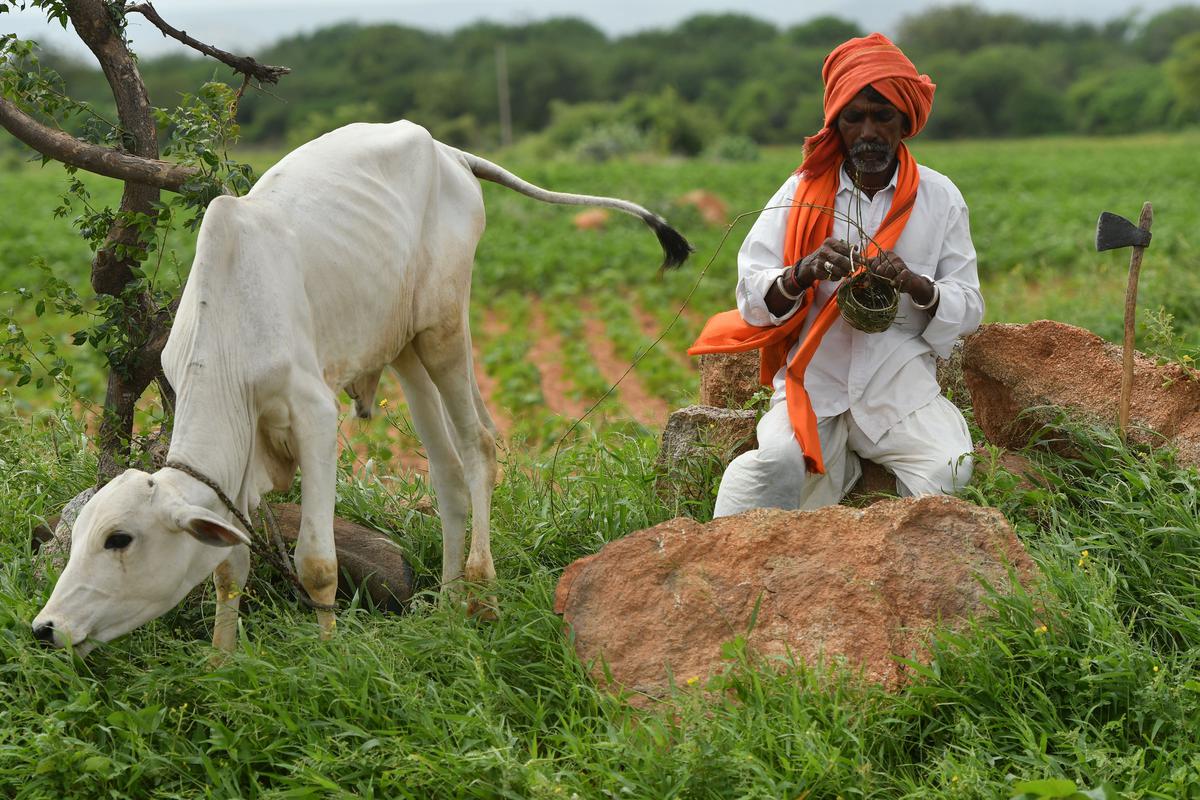
Photo: Nagara Gopal
Getting started: A tribesman makes a basket with dried twigs in preparation for the Teej festival.
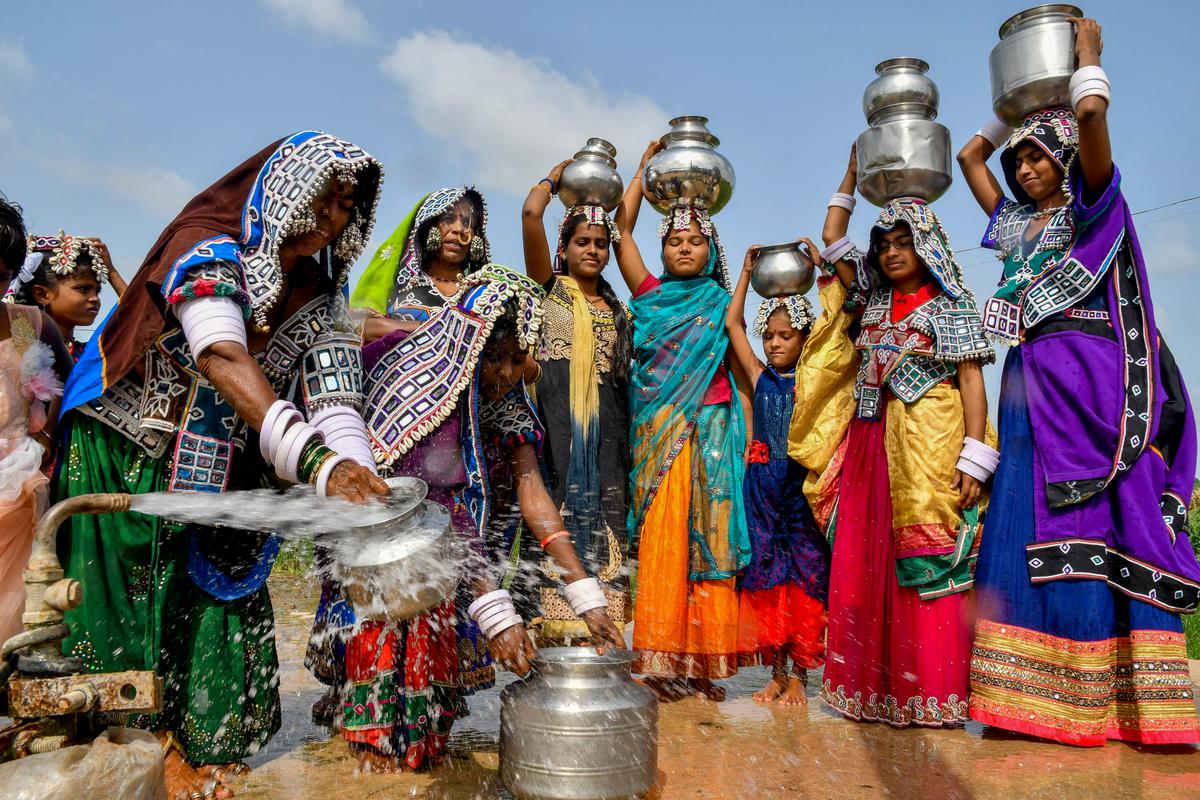
Photo: Nagara Gopal
Keeping them fresh: Young women take pitchers of fresh water from borewells to water the seedlings.
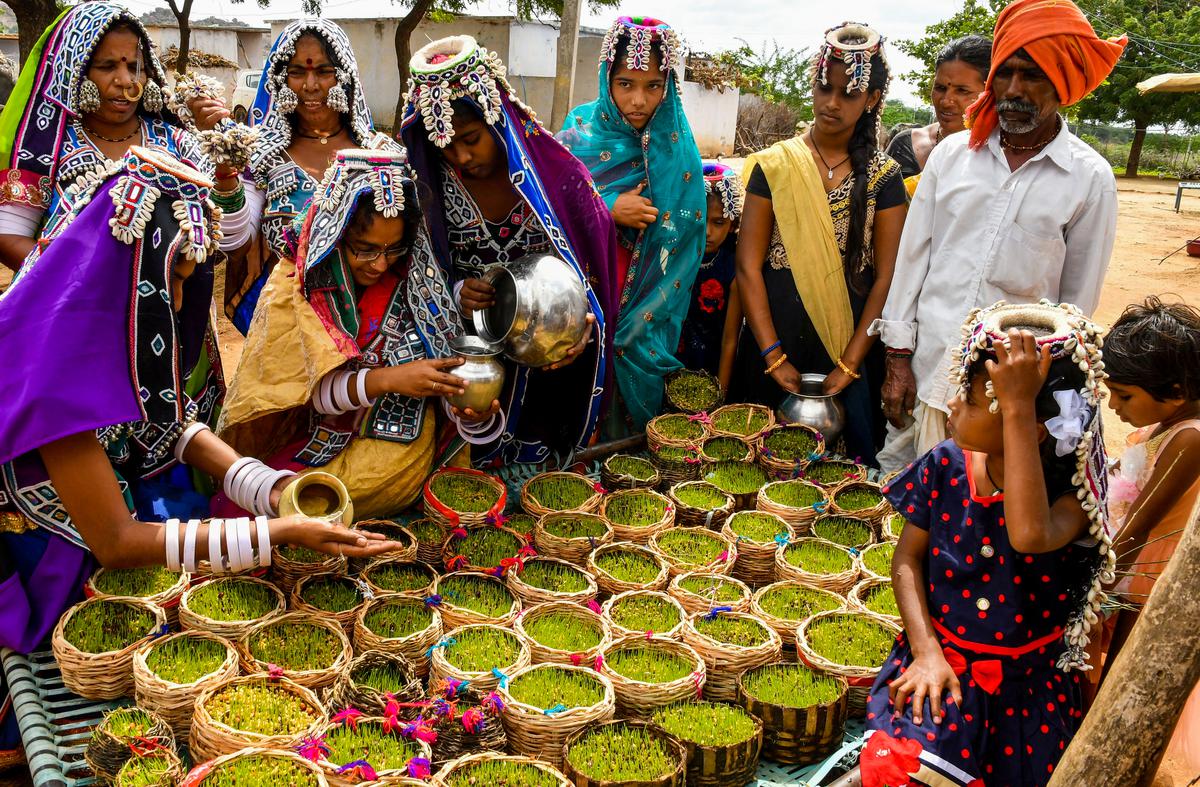
Photo: Nagara Gopal
High hopes: Young women water seedling baskets praying for a good harvest and bright future.
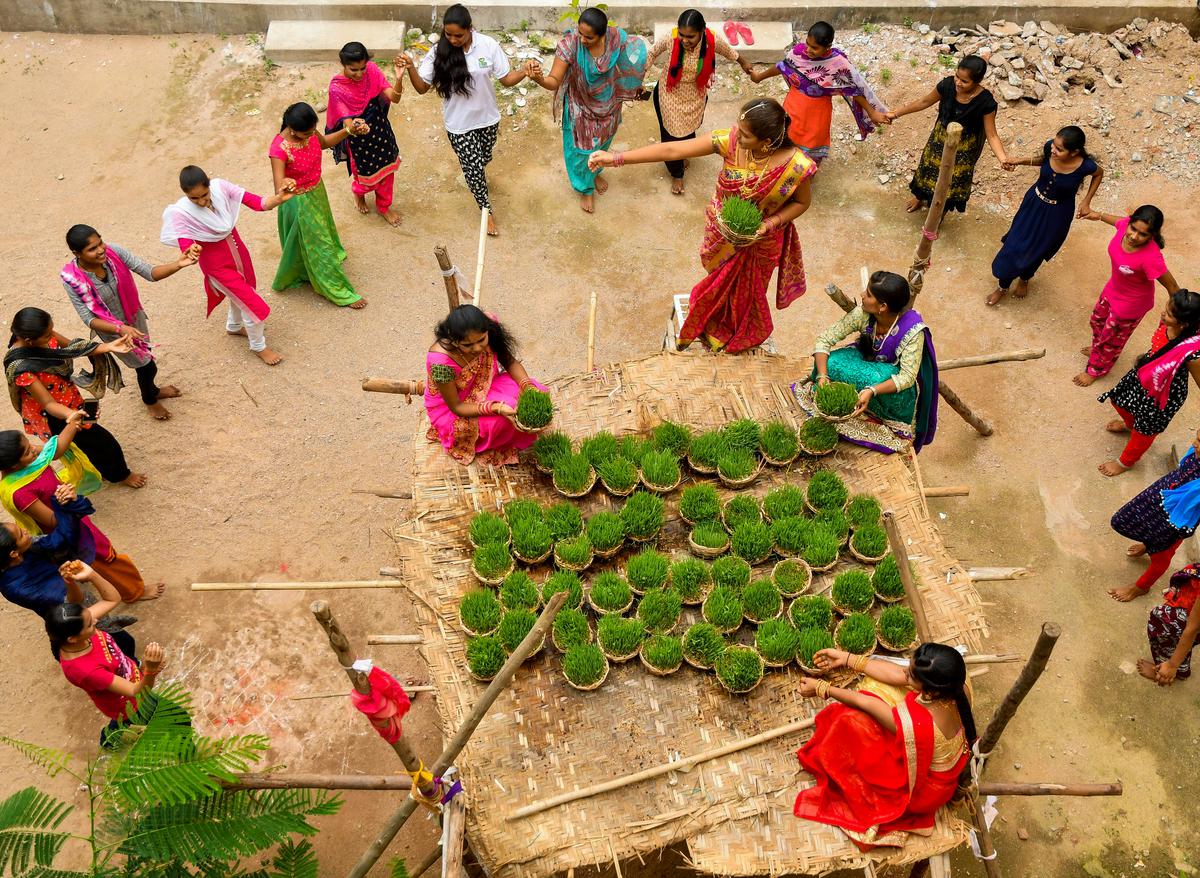
Photo: Nagara Gopal
Festive spirit: Young women sing and dance around a raised platform on which their seedling baskets are kept.
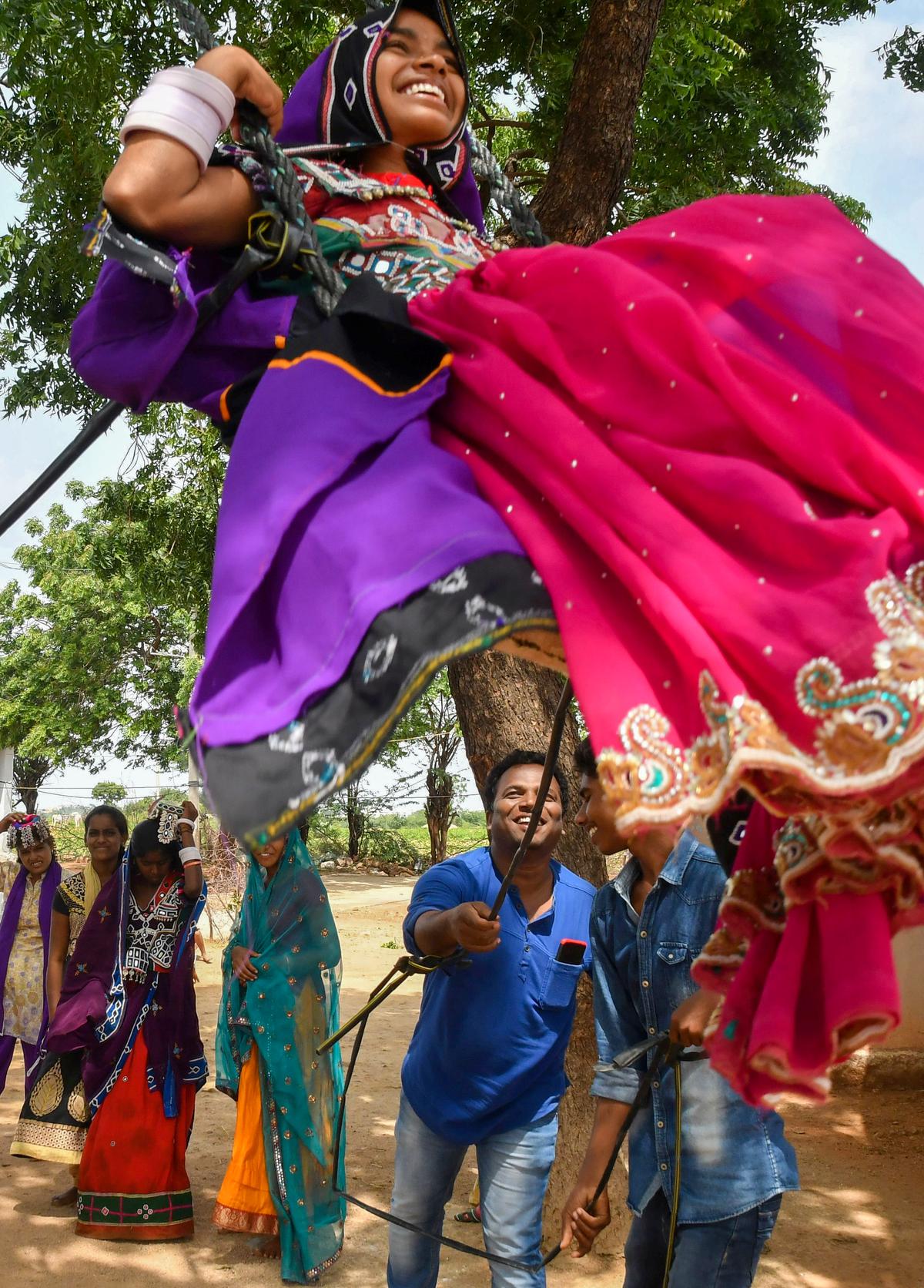
Photo: Nagara Gopal
Flying high: Villagers take turns to swing, basking in the spirit of the festival.
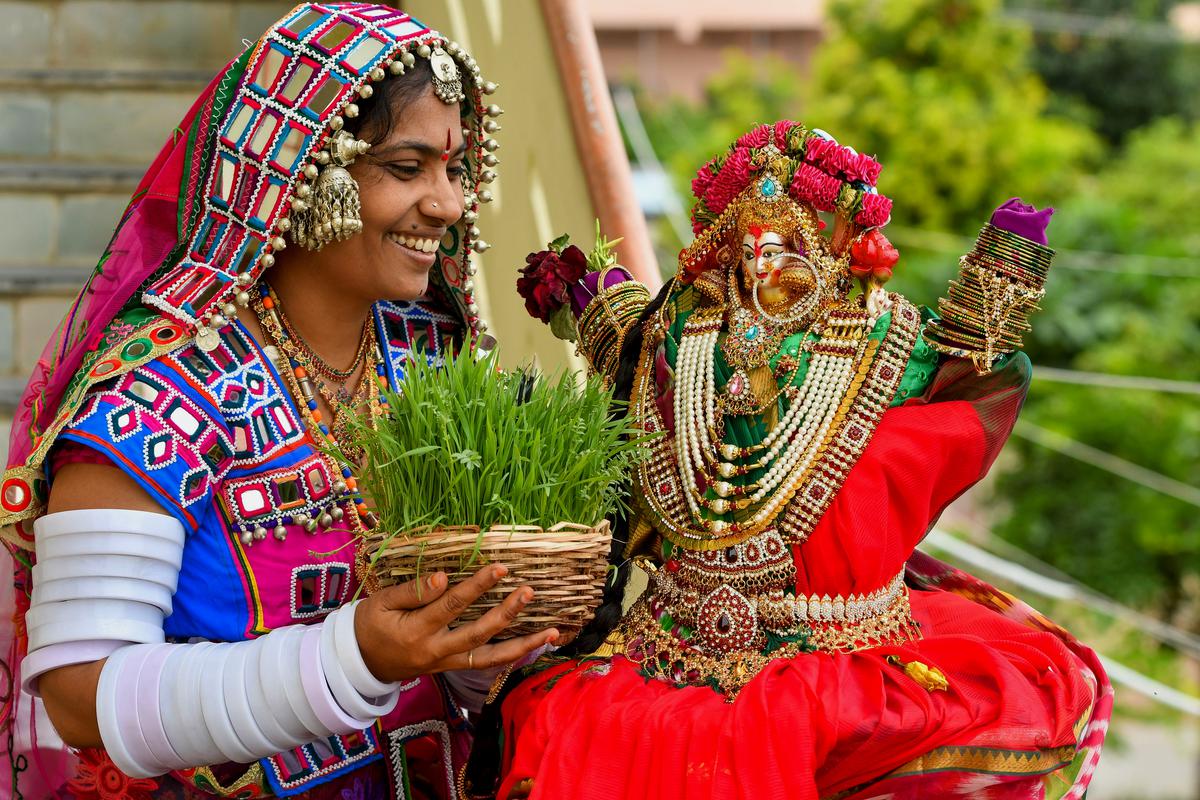
Photo: Nagara Gopal
Blessed saplings: A young woman brings her basket of seedlings to Goddess Parvathi, before immersion on the final day of festivities.
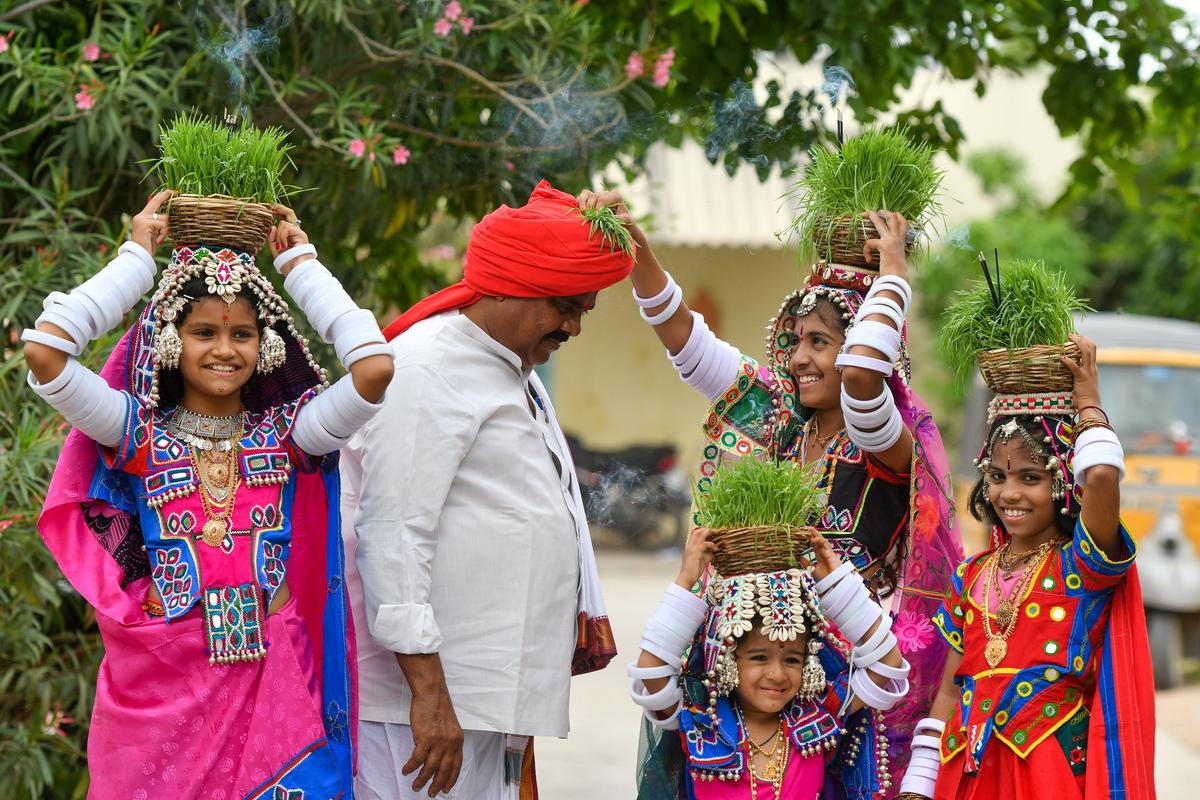
Photo: Nagara Gopal
In line with traditions: Young girls seek blessings of the Naik (elder of the community), by placing the wheat seedlings on his pagdi (headgear) before immersion.
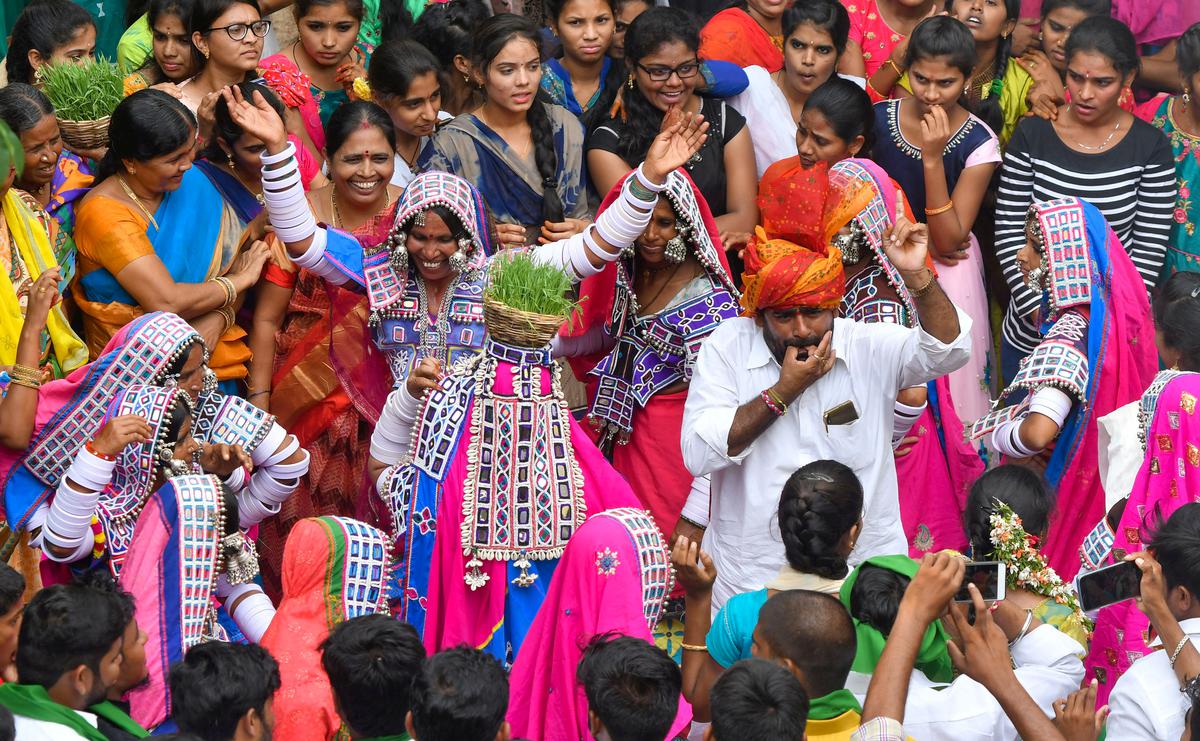
Photo: Nagara Gopal
Joyous occasion: It’s all dance and mirth on the final day of festivities, when the wheat saplings are immersed in lakes or canals.
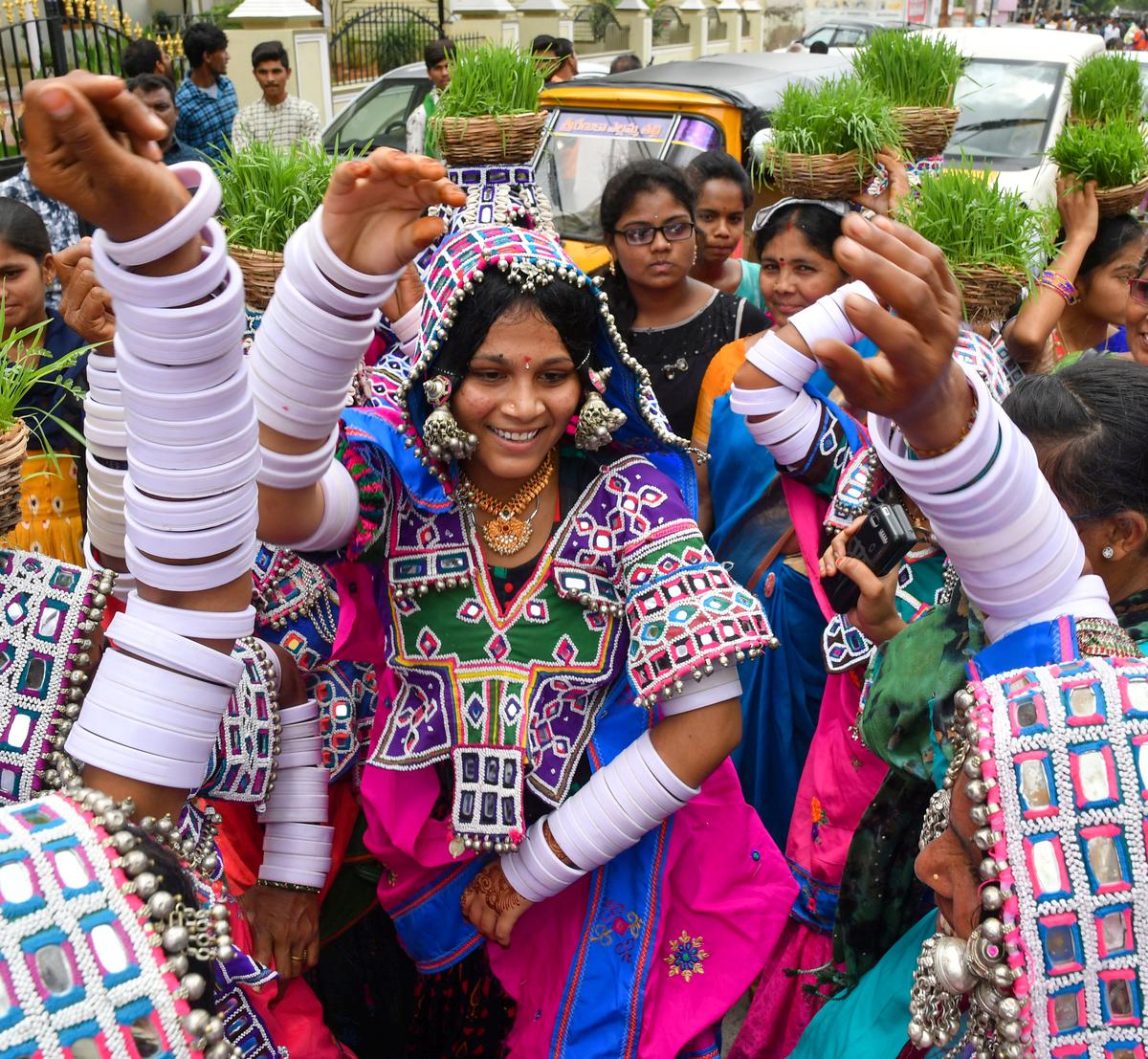
Photo: Nagara Gopal
Good days ahead: Expectation of a good harvest and abundance elevates the last day of festivities.







